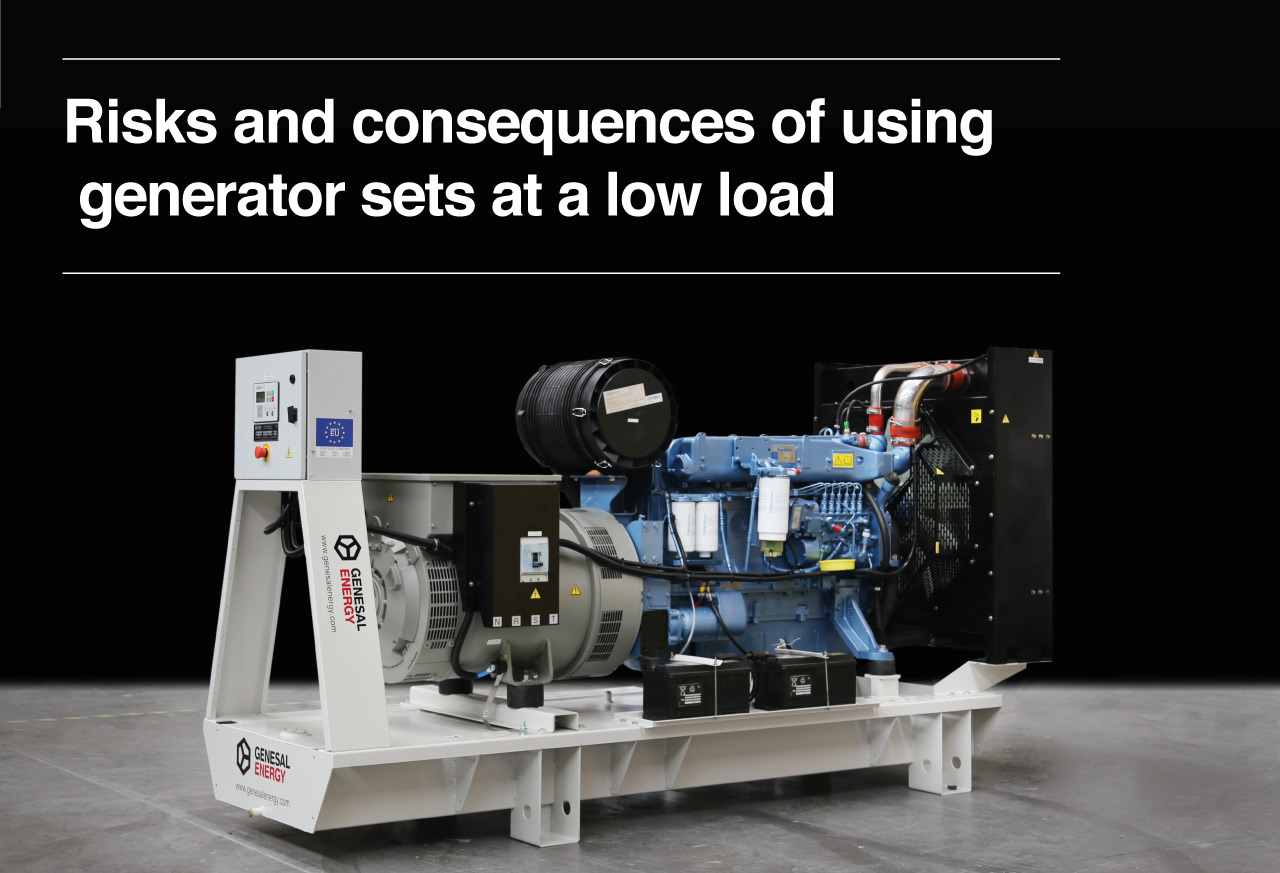Risks and Consequences of Using Generator Sets at a Low Load Operation
Minimum load for generators
Generator sets are designed to operate close to their rated power, and maintaining them properly is essential to ensure optimal performance. Every generator has a recommended minimum load, typically around 50% of its rated capacity. Operating below the generator minimum load for extended periods can lead to serious issues and reduced lifespan.
Main symptoms of something malfunctioning
One should be concerned when:
- The engine gives off oil mixed with fuel through the exhaust manifold – including the exhaust outlet or the muffler.
- There is oil spillage, dripping of oil of a very dark colour, as if burnt.
- The exhaust gives off a white smoke, more smoke than usual is seen or there is soot coming out of the exhaust outlet.
- The valves and tubing are clogged by dirt (presence of cinder).
The effect of low load on generator performance
“We saw engines working continuously for 24 hours at a tenth of their load and exhaust manifolds with six centimetre holes reduced to one centimetre by the accumulated cinder and oil”, Genesal Energy Technical Director Guillermo Docampo explains.
The effect of low load on a generator includes serious internal damage over time, particularly due to incomplete fuel combustion and oil dilution. These issues directly impact engine health and efficiency.
Negative effects of low load:
- Large accumulation of soot (cinder) in the pistons, in the grooves of the piston rings, in the valves and the turbocharger. If, subsequently, the engine functions at full load the pistons may be blocked by faulty lubrication.
- Low temperatures will result in insufficient combustion of the fuel, which, in turn, will cause the lubricating oil to be diluted and lose its properties because part of the fuel has mixed with the oil.
- Grinding of the cylinder liner. Excessive wear.
- The non-consumed fuel and the lubricating oil will also penetrate the exhaust manifold and will possibly exit through its seals, being very obvious -almost scandalous- because of its burnt aspect and by the stains it causes ((see photo below)).

Important: Do not run an engine generator set without a load for more than 15–20 minutes unless strictly necessary. Prolonged operation without load can lead to internal damage, high oil consumption, and a shortened lifespan of the equipment.
Why does low-load functioning in a repeated and continuous way cause an increase in oil consumption?
In reality, when an engine works at a low load, the ideal working temperature of the engine is not attained. This favours oil flow towards the upper part of the piston, because a correct adjustment within the piston-rings-cylinder assembly was not achieved. This is due to the lack of dilation resulting in an increased consumption of oil; the oil flows more easily between the valve guides and the stems due to a greater clearance because there was no sufficient warming.
How to prevent malfunctions? Is it possible to reduce the risks?
REQUEST THE FULL ARTICLE
Request the full article in the form below if you want more information on how to prevent failures and reduce risks when using generator sets at low load.












